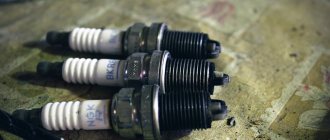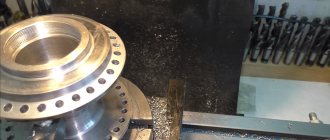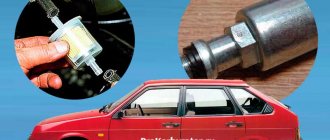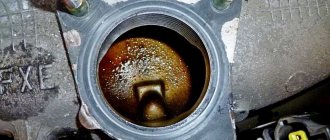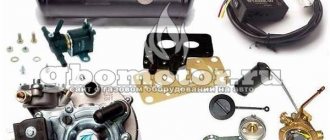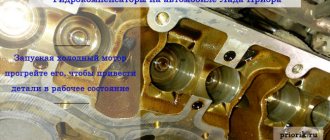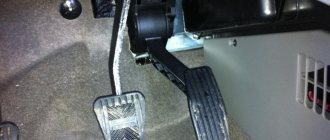The solenoid gas gas valve for HBO with a filter is distinguished by the fact that it is capable of effectively purifying the liquid phase from gas and various tarry deposits. In addition, it is this part that is capable of shutting off the gas supply when the engine is running on gasoline, or when the ignition is turned off.
The gas filling valve is, as a rule, actively used to supply gas fuel. Again, it is important to note here that it is capable of purifying the gas mixture from various impurities. The gas equipment valve can be used for certain vehicles whose owners wish to install gas equipment.
Operating principle of the solenoid valve. Peculiarities
If we consider the static position, then at this moment the valve coil will be de-energized, moreover, the valve closes completely, but it can also be open, since everything depends on its type. As for the membrane and piston, these parts are in contact with the seat of the product.
It is important to note that as soon as electrical voltage is applied to the coil, it causes the valve to begin to open. This action begins to occur with the help of a magnetic field, which is created in the coil.
At the moment when a consumer wishes to purchase an LPG gas valve, he must understand that it will be necessary to take into account the technical characteristics, this also applies to design features. This is explained by the fact that not all existing valves will be able to direct the movement of the medium in one direction or another.
There are options that work in a certain direction of flow of the working medium. If you ignore such factors, this will lead to the products losing their functionality. So, when choosing an LPG filling valve, you need to remember: the device must be studied in detail and carefully.
How to install the filling valve
To install a filler or when replacing a faulty one, you will need a set of tools and the valve itself. As a rule, when purchasing gas equipment, the VSU is already included with a multivalve.
Let us describe the process of installing the valve in the gas tank flap, since this method is more “complicated” and in demand. The first step is to mark the drilling location with a marker. Then carefully use a core drill to drill a hole.
Next, degrease and treat the exposed metal with an anti-corrosion compound (you can apply a sealant for reliability). Stretch a line (plastic or copper) to the hole. Place the nut and ferrule on it. Screw the nut to the VZU. Install node.
Malfunctions. What should you know?
It should be noted that situations often arise when the LPG filling valve device fails, and the reasons can be very different. For example, if you notice that it does not work as it should, and perhaps does not respond at all, then you should study all the reasons for what is happening. Here they are:
- More and more often we have to face such a problem as the accumulation of foreign elements - this is the most common reason. All this happens due to the fact that debris begins to accumulate on the surface of the core, and this leads to the fact that the LPG valve stops working properly.
- It is necessary to take into account: with long-term use of the valve, sediment begins to appear on it. This leads to the fact that the product stops working correctly. Thus, the petrol solenoid gas gas valve requires that all points of the operating instructions be strictly followed, and when problems arise, they are immediately resolved.
- Situations often arise when the product is in good working order, it functions and works without interruptions, but the system itself does not work. Thus, it is not possible to switch from gas to gasoline.
If you encounter such a problem, then you need to carefully check the power supply to the coil of the product; perhaps there is poor contact of the power wires or oxidation of the contacts has occurred.
Attention: You should listen to the opinion of experienced specialists, because in order to avoid such troubles, you need to carry out regular maintenance of the gas equipment, and accordingly, change the filter elements on time. In addition, you need to refuel exclusively with high-quality gas by visiting proven gas stations.
Selecting a valve installation location
Each installation method above has its pros and cons. For example, when installing a charger on a bracket, it is not always possible to place it for convenient refueling. Also, with this arrangement, there is sometimes a danger of the device breaking.
VZU under the bumper
If you crash the device into the bumper, you will have to irreversibly damage the paintwork. In addition, some motorists believe that these two methods spoil the aesthetics of the car.
Refueler in the bumper
The most optimal option is to install an LPG filling device in the gas tank flap.
Insert in the hatch
There is one advantage here - it does not spoil the appearance. But there are more disadvantages:
- if the drilled hole is not properly treated, corrosion will appear very quickly;
- inconvenience during the installation process;
- the need to carry a special adapter with you (maybe with a filter) and install it at each refueling.
On some cars, due to the large compartment of the gas tank neck, it is possible to install a remote VZU. This eliminates the need to store the adapter.
One way or another, the choice remains with the owner of the vehicle when it comes to where to place the remote LPG refueling device.
Installation of the solenoid valve. Peculiarities
No one denies that the gasoline valve for gas equipment plays an important role, as does the check valve for the second LPG chamber. That is why any manipulations associated with this equipment must be carried out in a careful, high-quality manner; it is advisable that this work be carried out exclusively by specialists with extensive experience and experience.
The valve, or multi-valve, of gas equipment is considered the most important element. If you begin to notice the appearance of certain problems associated with the functioning of the gas equipment, then know: this may indicate that this valve has actually failed.
Wanting to cope with such a problem on their own, many people often face serious troubles. If this work is carried out by specialists with an arsenal of necessary tools and appropriate equipment, then many problems can be avoided.
A little earlier it was said about the main reasons for unit failure. It should be noted that it is quite possible to check the valve of a particular gas equipment in two ways: in the first case, you can always measure the current indicators, of course, at its outputs, and in the second case, you can analyze its operation. If the valve is in good working order, then know that it will always click when you turn the key in the ignition, and, of course, during the process of starting the engine.
Types of mechanism
The types of filling mechanisms can be roughly divided according to the installation method:
- remote valve on bracket;
- mechanism built into the bumper;
- assembly embedded in the standard gas tank flap.
Types of filling devices
The design of all valves is identical:
- frame;
- lid;
- ball;
- spring;
- seals.
VZU device
The solenoid valve of the geyser does not work.
The guest wrote: the gas water heater stopped turning on, the gas simply does not light up. Water flows, there is pressure in the system, the gas is open - it doesn’t light up and that’s it. The column is completely automatic, you can do it as the master explained - you don’t need anything, it works by itself, lights up and turns off. After my wife washed herself, the speaker stopped turning on.
I also don’t agree that “90% is due to dead batteries.” The reason for “Gas is open - does not light up” could also be the flow sensor; the automation simply “does not see” that there is water flow through the column. Or there could be a problem with the gas valve. You can guess for a long time.
In any case, start by replacing the batteries (if you have ignition from them), if it doesn’t help, call a specially trained person. Of course, you will have to pay for diagnostics. But he will establish the exact cause of the problems.
How to remove the multivalve
To diagnose and identify the cause of the malfunction, remove the “can” from the gas cylinder.
- Disassembly should only begin when there is no more gas in the cylinder.
- First you need to loosen the fastening of the gas pipeline tubes and release the remaining gas.
- After all the gas has completely left the cylinder, we proceed to disassemble the multivalve. To do this, unscrew all the mounting bolts. This must be done very carefully, since breaking the fastening bolt does not threaten anything good. If one or more bolts do not respond, treat them with penetrating lubricant and wait a few minutes.
Unscrew all the bolts and carefully remove the multivalve from the cylinder
It is best to show the obtained “caricature” to a specialist who will determine whether it is possible to get by with a repair kit for the multivalve or whether this unit needs to be completely replaced with a new one. If you decide to replace the multivalve, you must reassemble in reverse order.
The solenoid valve of the geyser does not work.
There is a solution when the solenoid valve does not open. Apparently there is a weak current on the coil, and even the gas pressure “holds” the valve in the closed state, so the valve needs help (if the stem moves freely with the valve removed, it should work). You need to attach a not very strong magnet to the back wall of the valve, so that it does not open the valve on its own (in my case, it was a curtain magnet). The valve stem will be in a magnetized state, and a minimum of effort will be required to move it; it will work even with dead batteries. You can experiment with the power of the magnet.
An electromagnetic gas valve with a filter cleans the liquid phase of gas from suspended matter and tarry deposits (coarse filter) and shuts off the gas supply when the engine is running on gasoline and when the ignition is turned off.
LPG gas valve is used to supply gas fuel and to stop it. In addition, it purifies the gas mixture from all kinds of impurities. The LPG gas solenoid valve is used for all cars when installing gas equipment.
Operating principle
When the filling nozzle is connected, under the influence of gas pressure, the ball opens the valve inlet, moving towards the tube connected to the multivalve.
After filling the cylinder with a propane-butane mixture to the specified value, the gun is disconnected, and the residual pressure in the line presses on the ball, which moves in the opposite direction, locking the inlet section. This is how the valve closes.
HBO valve device
Depending on the model and manufacturer, the gas turbine valve device may vary, but often consists of the following elements:
- Core;
- Valve with return spring;
- Electric coil with winding;
- Gaskets and seals;
- Coarse filter. Quite often, the LPG valve is equipped with a coarse fuel filter, but such equipment is not required.
What does all this threaten?
The very fact that, despite the decent costs of purchasing and installing liquefied petroleum gas, you have to drive on gasoline is quite annoying. After all, the owner planned to save on fuel. But that is not all.
Most of the defects presented have a negative impact on the condition of the engine. Ignoring the “Check Engine” indicator is a direct path to burnt valve seats. Ignoring deviations in the operation of the engine cooling system and internal heater leads to overheating of the block, cracking of the head and burnout of the gasket. In this case, repair costs will cost tens of thousands of rubles.
Installation and operating principle
Installation
It should be noted that different installers of gas equipment systems install different numbers of solenoid gas valves on a vehicle.
- The cheapest and most common scheme is to install one EGC directly on the evaporator reducer.
- A more expensive scheme implies the presence of two parallel gas gas valves: one is installed on the reducer, the second on the flow line of the multivalve or after the multivalve and shuts off the gas supply to the line.
- The last, most reliable and expensive option has three devices paralleled to each other: the first is still located on the gearbox, the second (backup or safety) is installed in front of the gearbox, and the third is installed on/after the multivalve, near the cylinder.
Principle of operation
The operating principle of the HBO valve is as follows:
- Initially, the HBO valve is in a closed state.
- After the car is ready to switch to gas, the ECU (or the driver pressing the “gas-gasoline” button) sends a signal (+12 v) to the EGC coil, the magnetic coil is activated, lifting the shut-off valve (a characteristic click is heard).
- After the gas solenoid valve opens, the gas enters the coarse filter, and then into the evaporator reducer.
Installing a multi-valve in an LPG system, doing everything right
solenoid metering valve
Category :News
Let's talk to you about how to properly install a multivalve on gas equipment.
The first thing to say is what not to do. Unfortunately, some craftsmen install a multivalve according to their own opinion or at the request of the client. Quite often it is the customers who ask the installer to do something so that they can refill much more. For example, you can bend the float holder, you can install the cylinder at a specific angle so that during subsequent refueling the float rises to its highest point. It is precisely because of the presence of such violations that it is possible to fill a cylinder with a large amount of gas, while few people think about the disadvantages, as well as about the possible consequences that the vehicle owner will have to deal with.
The photo in front of you shows how craftsmen usually install a multivalve in a cylinder, which is undoubtedly not the right decision. I would categorically not recommend doing this, because when the cylinder is located in this state, the intake pipe is located almost in the middle of the tank, as a result of which when there is less than 40 gas remaining, the engine itself switches to gasoline fuel, since gas will no longer flow. Another important point is the fact that due to such an installation, there will be no empty space in the cylinder, which is so necessary for sufficient expansion of the gas as the temperature around it increases. And this can lead to an increase in the load on the shut-off valves, which in turn can cause a gas leak and a decrease in pressure in general, both in the cylinder and throughout the gas equipment. And as you understand, this is very serious and dangerous.
Now we need to talk about how to do this correctly. Look at the photo, it shows everything as it should be. It is imperative to ensure that the angle is 30, or as indicated by the LPG manufacturers, since it is most effective. It is in this position that a much smaller amount of gas will remain in the tank, and the legal 20% will remain for gas expansion in case of temperature changes around.
Now let's talk about how to install a multivalve in a gas cylinder. First, as expected, we should prepare our balloon. To do this, you must first empty it and then check for any damage. After installing the rubber seal, then the ventilation cover, just make sure that the holes for the mounting bolts match. Then we install the multivalve itself. You need to carefully monitor the holes for fasteners and the inlet and outlet holes of the cartoon. Then we fasten all the bolts and tighten everything in a checkerboard pattern. Everything must be done extremely carefully, without distortions, do not forget about even tightening. When everything is tightened, you can say that a huge job has been done. All that remains is to install the gas cylinder back, secure it, and then connect the pipes.
Possible malfunctions and breakdowns
Like any element of the system, the LPG gas valve is susceptible to breakdowns, and since, as we found out above, this element of the system performs a locking function, without its proper operation, the car most likely will not switch to gas. And although the cost of this system unit is not high, it is not always possible to purchase a new LPG valve, therefore, in order to repair a broken one, you need to have an idea of the most common breakdowns of this element.
Mechanism contamination
The HBO solenoid valve operates in the engine compartment, which means it is exposed to dust, dirt, rust, scale and other debris that can get inside the device, thereby preventing the valve from opening. In this case, disassembling and simply cleaning the device from foreign objects will help.
Filter clogged
Most valves that are installed in front of the gearbox have a coarse filter, which, although not directly related to valve failure, can provoke unstable operation of the entire LPG system or prevent it from switching to gas at all. In this case, the filter should be replaced. It is recommended to do this at least 2 times a year or every 10,000 km (whichever comes first).
Coil failure
A malfunction of the electromagnetic coil can be determined by measuring the resistance of the coil with a multimeter. In this case, the valve will not work and the car will not switch to gas. The coil can be replaced with a similar one by selecting a new one according to suitable parameters.
Oxidation of valve contacts or broken wire
Another fairly common breakdown is contact oxidation. This malfunction occurs especially often with the onset of the rainy season. In this case, you should check the serviceability of the wiring and carefully clean all contacts to remove oxidation. It is also quite common to encounter a break in the wiring that supplies +12v to the HBO valve coil. You can check the wire break using a tester or a car lamp.
This concludes our article, share links to our website on social networks or forums - this is the best way to help the development of our project, and if you still have any questions, feel free to ask them in the comments, and we will be happy to answer them.
Symptoms and costs
When operating a vehicle on liquefied petroleum gas, 18 typical malfunctions most often occur. Some of these are faults in the gas system itself, while others are typical problems that can be expected from a gas car over a long period of time.
1. Refrigerant leak.
Signs: the coolant level in the tank drops below normal. Reloading doesn't help. The situation repeats itself again and again. Puddles (drops) may appear under the car.
This causes: when installing HBO, you have to cut into the cooling system. Coolant is used to heat the gearbox. Leaks most often occur in “tapping” areas. The exchange itself could lose. Coolant may enter the intake manifold and gas may enter the cooling system.
Repair cost: 1000-6000 rubles.
2. Engine overheating.
Signs: the thermometer needle enters the red zone, antifreeze is boiling.
This causes: during installation, the circulation of liquid in the system was disrupted; the system was airy.
Repair cost: up to 1000 rubles. It is necessary to remove air from the system and, in some cases, replace pipes and clamps.
3. The car jerks when it accelerates.
Signs: When running on gas, power will increase unevenly, the car will shake, the engine will have difficulty idling. At the same time, the engine runs perfectly on gasoline.
This causes: the gas may have run out. In the case of mechanical LPG (Generation I and II), damage to the gearbox or leaks in the intake system is likely. The stepper motor of the gas dispenser may also be damaged. The injectors are also to blame (if there is multipoint injection).
Repair cost: it all depends on the cause of the problem. A set of LPG injectors including replacement will cost 4,000-9,000 rubles.
4. The gas reserve indicator does not work.
Signs: Regardless of the amount of gas loaded, the indicator shows a value different from the actual one.
This causes: The gas level sensor works on the same principle as the float in the toilet tank. A stuck float is the most common cause of erroneous readings. Perhaps the reason lies in an electrical fault: lack of contact, short circuit, etc., etc.
Repair Cost: In most cases, you can get rid of it by touching the gas cylinder. If the float comes to life, consider yourself lucky. Otherwise, you will have to prepare from 800 to 2000 rubles.
5. Heating does not work.
Symbols: Regardless of the position of the set temperature adjustment knob, cold or slightly hot air comes out of the vents.
This causes: The cooling system was exposed to air during installation. It is possible that the cause of the malfunction is incorrect installation of the LPG gearbox.
Repair cost: removing air from the system will cost no more than 1000 rubles. To change the position of the gearbox, you will have to spend up to 3,000 rubles.
6. The gas cylinder cannot be completely filled.
Signs: Gun fires too early.
This brings up: sometimes the fault lies with the gun itself. However, much more often the cause lies in a faulty filling valve. It can be replaced or removed and cleaned. Before going to the service center, you should try to refuel at another station, just in case.
Repair cost: a new valve costs from 600 to 1000 rubles. The cost of replacement work is about 500 rubles. But most often you can get rid of it by cleaning the valve - from 500 to 1000 rubles.
7. Loss of power.
Signs: in this case, this is a situation in which the dynamic characteristics of the car deteriorate from month to month, although initially everything was in order. The engine runs properly on gasoline.
This raises: LPG filters may be to blame, but that's not all. In older mechanical systems (Generations I and II), the cause may be a worn gearbox, or in the case of a multi-point injection system, faulty LPG control electronics or faulty injectors.
Repair cost: replacing the filter will cost 500-1000 rubles. In other cases, the cost depends on the specific case.
Signs: smell of gas in the cabin or near the car.
This causes: The gas has a pungent odor, so even a small amount is immediately noticeable. The reason may be either small leaks or a leaky exhaust system. In older systems, a leak in the intake duct may allow gas to enter the interior air intake system.
Cost of repairs: everything is assessed individually in each specific case. The repair begins with a classic joint leak test, which will cost about 500 rubles. In some situations, the cost of elimination can reach up to 3,000 rubles.
9. The engine does not develop speed.
Signs: at low speeds the engine runs fine, but is reluctant to turn.
This causes: the reasons can be different, ranging from the prosaic clogging of the LPG filter and a faulty gearbox (or its performance is too low), and ending with problems with the software.
Repair cost: replacing a filter costs from 500 to 1000 rubles. You will have to pay 10 times more to replace the gearbox. Diagnostics and tuning are assessed individually, depending on the type of installation and engine.
10. The engine stops unexpectedly.
Signs: the engine stops at the most unexpected moment: at an intersection, when releasing gas, when braking, etc.
This causes: In older systems, the cause lies in an incorrect configuration or incorrect modification of the intake system. Sometimes it turns out that the gearbox is installed incorrectly. In systems with multipoint injection, such problems are not observed, and if something similar happens, the cause must be sought in the electronic control system.
Cost of Repair: Repair consists of accurate diagnosis and fine tuning. The cost will be from 800 to 2000 rubles.
11. The “Check Engine” light comes on.
Signs: The check engine light is always on or only comes on under certain recurring conditions and goes off after a few days.
This causes: for some reason the composition of the scan does not correspond to the parameters provided by the automaker. You can drive the car, but ignoring the problem could burn valve seats or damage the catalytic converter.
Repair cost: you will have to pay from 800 to 2000 rubles for diagnostics. Additional costs depend on the purpose of the work.
12. The engine “lights up”.
Signs: It applies to LPG vehicles of mechanical type with multipoint injection. When starting from a stop or accelerating from low speeds, the mixture explodes in the intake manifold.
This causes: failure of the ignition system, incorrect adjustment of the mixture composition, installation errors, and a very large volume of the intake manifold.
Repair cost: sometimes it will be necessary to replace high-voltage cables and spark plugs, filters. You will have to pay about 5,000 rubles for everything. Additional costs will be required to correct and repair damage from the explosion. The final cost may exceed 15,000 rubles.
13. Worn fuel pump.
Signs: a characteristic hum is heard from the rear of the car. When driving on gasoline, sometimes there is not enough power, the engine runs intermittently and is difficult to start.
This causes: In some LPG vehicles, the fuel pump wears out faster than normal. Much depends on the type of equipment and how it is installed.
Repair cost: depends on the model and type of pump. The cost of a new pump is from 2500 to 8000 rubles.
14. Worn valve seats.
Signs: The engine is losing power or running rough. Valve clearance cannot be adjusted correctly.
This causes: valve seat wear is accelerated not by the gas itself, but by the lean mixture, which is a consequence of improper regulation of liquefied petroleum gas. It is worth noting that the composition of the mixture must be correct not only in stationary conditions, but also in transient conditions, for example, during acceleration.
Repair cost: the repair is very serious and consists of disassembling the cylinder head and its regeneration. The cost of restoration varies from 13,000 to 25,000 rubles.
15. Wear of the ignition system.
Signs: The old type of internal combustion engine does not work properly - it “shoots” and freezes. For multipoint HBOT, this problem rarely occurs, or at least has less severe symptoms.
This causes: To create a spark in a propane-butane-air mixture, a higher voltage is required than in an air-gasoline mixture. For this reason, the ignition system is subject to greater stress and wears out faster.
Repair cost: for a new spark plug you will have to pay from 150 to 1000 rubles. The cost of new high-voltage cables ranges from 2,000 to 20,000 rubles. A regular old-fashioned ignition coil will cost about 1,000 rubles, and a cassette - 10,000 rubles.
16. Body corrosion.
Signs: Corrosion occurs wherever the LPG installer intervened: near the external filling device, under the screws that secure the LPG wiring to the body, under the gearbox mounting screws, and also in the trunk - in the area of the gas tank connection.
This causes: installation requires drilling of the body, which is necessary for fastening the LPG elements. The holes are protected by simple methods, usually with the help of aerosols, which do not always do their job well.
Cost of repair: Sometimes it is enough to clean the areas damaged by rust and refinish them. In extreme cases, you will have to move the attachment points to other places.
17. Exhaust system corrosion.
Signs: The engine is noisy, smells of gas and the exhaust system hums when changing gears.
This causes: When burning liquefied gas, more water vapor is produced than when burning gasoline. As a result, the exhaust system corrodes faster and mainly internally. The exhaust system may "ring" and resonate, although upon inspection it appears to be in good working order and sealed.
Repair cost: in the case of popular cars, replacement will be cheaper - from 5,000 to 10,000 rubles.
18. Damage to the intake manifold.
Signs: engine runs rough, stops, does not idle.
This causes: after installing LPG in the manifold, you can relieve pressure at the places where the injectors are installed. In cars with LPG for multipoint injection, the gas destroys the manifold and other elements of the intake system, such as the flow meter.
Repair cost: very rarely the manifold or other elements of the intake system are restored. Repair consists of replacing damaged elements with repairable ones (new or used). It is necessary to prepare for expenses ranging from 3,000 to 20,000 rubles.
Hello. I am glad to welcome you to the site dedicated to equipment for liquefied petroleum gas and everything connected with it. Today I want to raise, as it turns out, a rather popular and controversial question: “Where should I install the air intake in the gas tank flap or in the bumper?” Option.
For those who are not familiar with the VZU, this is a remote refueling device through which a gas cylinder is refueled, that is, an analogue of the fuel tank neck through which you refuel your car at a service station. Those who have installed LPG or are planning to do so know that OVC is often installed in three places: in the bumper (bottom, right or left), in the fuel filler flap (next to the filler neck), directly in the trunk (next to the gas tank). The message option is quite rare, in my opinion, impractical and inconvenient, so we will not take it into account. As for the first two options, each of them has its own differences, as well as pros and cons, which we will now talk about.
The remote filling device installed in the bumper differs in that it requires the creation of a hole in the lower part of the bumper with the subsequent installation of a decorative cover (plug) on it.
Replacing the HBO cylinder
At first glance, this is a simple operation. This is true if the cylinder is repaired or replaced with a new one at a service center. When a service cylinder arrives, it is inspected for cracks, deformations, and integrity of the weld. Condensate is removed from the cylinder, the cylinder is degassed, and the condition of the limit float is checked. The limiter must be configured in such a way that when refueling, 20% of the volume always remains unfilled. This is necessary to reserve volume in case of expansion or possible unexpected deformations of the cylinder. There are cases where cylinders were installed in makeshift conditions with weakened welds, a broken or bent rod, either planned (to increase the filling capacity) or by accident with a limiter. Which in turn led to negative consequences.
HBO Lovato 4th generation
E-GO - economy class LPG kit
E-GO – gas equipment for cars with an injection system with an engine of up to 4 cylinders. It combines advanced technical developments and innovations that improve properties such as high reliability and adaptability.
The E-GO kit meets all requirements and has all the necessary certificates, confirming the reliability and safety of its use. One of its main advantages is its ease of installation and ease of further maintenance. See E-GO specifications and equipment here.
Lovato SMART ExR – basic level LPG kit
The 4th generation Lovato Smart ExR LPG kit is basic. It has on board all the latest technologies, especially necessary for the joint supply of gas and gasoline in some extreme operating conditions of a modern car. The Smart ExR system allows, if necessary or desired, the use of high-speed injectors of the Lovato KP type. The kit can be equipped with a powerful UHP reducer or a variable pressure reducer RGJ DD. Lovato ExR is an excellent choice for any modern car with no more than four cylinders.
The 4th generation Smart ExR LPG kit is one of the most popular among cars with a distributed injection system and an engine of up to 4 cylinders. This system has been brought to the highest level in terms of performance, functionality and fuel efficiency.
All components of the gas equipment are optimally interconnected with each other, which is confirmed by their flawless operation. Each element of the system (here is a description of each element and the principle of operation) is tested, thereby guaranteeing the quality of the Lovato brand. A convenient and intuitive software interface allows you to speed up the process of calibrating and configuring gas equipment.
All this has been achieved thanks to the many years of experience of Lovato professionals, who undoubtedly make a huge contribution to the development of the gas equipment industry. Read more about the contents of the kit here.
EASY FAST C-OBD II - premium HBO kit
The Lovato EASY FAST C-OBD II premium LPG kit is used in cars with a fuel injection system and an engine of up to 8 cylinders. This option is the most functional and productive, and occupies the highest position in the Lovato gas equipment rating.
Like the rest of the 4th generation Lovato kits, Lovato EASY FAST C-OBD II has an auto adjustment function, which allows you to achieve ideal gas fuel supply and maximize engine performance. The most important difference between the Lovato C-OBD system and Smart ExR is the connection with the vehicle’s on-board diagnostics via the OBD II protocol, which allows the gas system to best adapt to the requirements of the gasoline controller. See the complete set and detailed description here.
HBO Lovato Direct Injection (direct injection)
EASY FAST - DIRECT INJECTION - LPG kit for use in cars with a direct injection fuel system and related to 5th generation LPG systems (full article about LPG generations). Supplying gas directly to the cylinder allows the system to control more precise fuel distribution and reduce the amount of harmful emissions into the atmosphere. The direct injection system reduces fuel consumption and produces higher engine power density.
With direct injection, gasoline is supplied via injectors directly into the cylinder - into the combustion chamber. In this technology, gasoline injectors are subjected to critical operating conditions and high temperatures. To avoid rapid wear and failure of gasoline injectors, automakers have implemented their cooling in the following way: gasoline, passing through the injectors under high pressure, cools them.
One of the most important requirements for a direct injection gas system is the protection and emulation of gasoline injectors: when the car runs on gas, there is always a minimum gasoline consumption to lubricate and cool the gasoline injectors.
The latest EASY FAST - DIRECT INJECTION system was developed based on the extensive experience of Lovato specialists and is focused on gasoline consumption of no more than 10-12%. Each direct injection LPG system is optimized for the technical characteristics of a specific car model.
Stages of working with the engine compartment
1. Installation of the processor on a special bracket This is a kind of gas computer that implements all the necessary functions, from injector simulation to gas injection control. It also provides system diagnostics. Most manufacturers recommend placing the processor in the cabin, so when installing it in the engine compartment, you need to choose the appropriate model.
2. Connection of wiring loop and motor control sensors to the processor
3. Installation of the gearbox This is a two-chamber, maintenance-free gearbox. Before installation, remove the pressure adjusting screw plug. There is a gas valve and filter on the reducer. The gearbox is fixed using a bracket.
Attention! The location of the gas reducer in the engine compartment should exclude the possibility of oil sediment accumulating on the membranes. Next, the gearbox is connected to the vacuum in the intake manifold
This is necessary so that the gearbox supplies more gas at low acceleration.
4. Cutting threads in the manifold, screwing in fittings
5. Attaching the gas supply hoses to the intake manifold
6. Fastening the injector frame in a convenient place
Attention! Gas equipment must be protected from corrosion, incl. on mounting screws
7. Putting hoses on the nozzles. Each of them is marked.
8. Installation of the temperature sensor sensor.
Attention! The presence of additional welds, holes, overlays and other repairs in the areas of fastening gas-fuel equipment and cylinders is not allowed. 9. Soldering frameless contacts
9. Soldering frameless contacts
10. Connecting the gas reducer.
11. Connecting the injectors according to the markings.
12. Switching the gas pressure and temperature sensor.
Attention! Gas equipment must include a switch for different types of fuel and an automatic locking system that prevents the continuous supply of two types of fuel. Switching engine operation from one type of fuel to another must be carried out from the driver’s workplace without stopping the engine
Switching the engine operation from one type of fuel to another must be carried out from the driver’s workplace without stopping the engine.
Car testing
To first check the correctness of all connections, you need to activate the program and see if the gas processor sees the machine. To do this, the fuse is inserted into the control wire. Next, the processor is connected via a diagnostic connector to the computer. The software reads the information.
After this the ignition is turned on. After starting, the machine performs self-diagnosis. After this, with the appropriate settings, the power will switch to gas.
Installation methods
The classification of a multivalve is also related to its installation features. They consist of types of cylinders, which are cylindrical, toroidal external and internal.
For any cylinders, the multivalve is placed inside the ventilation box with hoses extending out. This design is due to the fact that when the multivalve depressurizes, it is necessary to prevent the penetration of gas into the interior of the car.
Installation with cylindrical cylinder containers involves three options:
- Using a cap (material - silicone);
- Using a cylinder with a removable lid, which is welded to a gas cylinder;
- The use of a special housing with a plastic cover, as well as two flanges from which ventilation hoses come out.
The torus-shaped cylinder, which has an external neck, accepts a plastic or silicone vent block. Ventilation is carried out through openings in the body, where tubes for refueling and flow are connected.
Internal cylinders in the form of a torus are installed under the spare wheel in the trunk. They use ventilation blocks made of silicone or plastic.
Node diagram
The general design diagram of the HBO multivalve is as follows:
- A valve that closes the flow channel;
- A valve that closes the filling channel (if available);
- The fitting with which the filling tube is connected;
- A fitting used to connect a flow tube (smaller in diameter than the filling tube);
- Magnetic system that allows you to determine the gas level in the cylinder;
- A valve with a float to cut off the supply of the gas mixture when it reaches 80% of the volume (as the temperature rises, the gas expands);
- Mechanical or electric valves - spring or speed
